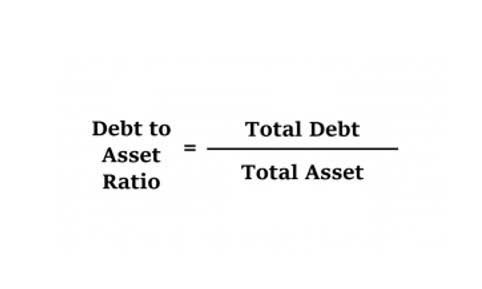Unlike the P/E ratio, the earnings yield is expressed as a percentage and used to compare stocks to different assets such as fixed-income securities like bonds or Certificates of Deposits. For example, determining a company’s earnings can sometimes be difficult. This is because accounting practices can differ from company to company, with some trying to hide costs to help inflate earnings.
Understand What Is A Good P/E Ratio & Make Smart Decisions
The level of statistical significance is often expressed as a p-value between 0 and 1. When you perform a statistical test, a p-value helps you determine the significance of your results in relation to the null hypothesis. what is gross monthly income As well, earnings can be manipulated to downplay expectations or to make the numbers look better. When the economy is booming, P/E ratios will be higher than average, and vice versa when the economy is on rocky ground.
What Does A Negative P/E Ratio Mean?
The book value of equity, in turn, is the value of a company’s assets expressed on the balance sheet. The book value is defined as the difference between the book value of assets and the book value of liabilities. A company’s price-to-book ratio is the company’s current stock price per share divided by its book value per share (BVPS). This shows the market valuation of a company compared to its book value. Because P/E ratios tend to depend on expected growth rates, the P/E ratios of a company or industry also depend on current growth rates and how they set the expectation for future growth rates. This same concept can be applied to industries and individuals stocks.
What Is The PEG Ratio?
Assume that a company has $100 million in assets on the balance sheet, no intangibles, and $75 million in liabilities. Therefore, the book value of that company would be calculated as $25 million ($100M – $75M). A company should be compared with similarly structured companies in similar industries; otherwise, the comparison results could be misleading. The P/B ratio also provides a valuable reality check for investors seeking growth at a reasonable price. It is often evaluated with return on equity (ROE), a reliable growth indicator.
How To Understand The P/E Ratio
A high P/E ratio can indicate strong growth expectations but carries more risk. Investors should carefully evaluate the company’s financials and growth prospects before investing in stocks with high P/E ratios. To evaluate an individual stock’s PE ratio, compare it to competitors. You should also compare a stock’s current PE with its average multiple over the past three, five or 10 years.
First, the ratio should only be used when comparing similar companies within similar industries against each other. As different entities and different sectors have varying capital requirements, the P/S ratio of one industry may vary greatly from the ratio of another. The second type is the trailing twelve months P/E ratio, which uses EPS data from the past 12 months to judge a company’s current performance. Should you pay the higher price for a stock with a high P/E because of higher growth prospects? A good P/E ratio varies depending on the industry, company-specific factors, and market conditions.
- The article explains how to calculate a company’s price-to-earnings (P/E) ratio using its earnings per share (EPS), which is an indicator of its financial health.
- Popular investment apps M1 Finance and Robinhood use TTM earnings as well.
- This is the same if we ask “what is a good ROE“, or “what is a good P/B”, or what is the best entry point of the trade.
- The articles and research support materials available on this site are educational and are not intended to be investment or tax advice.
A high share price versus asset value could also mean the company is earning a high ROA. However, the high stock price could indicate that most of the goods news regarding the company has already been priced into the stock. As a result, any additional good news might not lead to a higher stock price. A company’s book value is its total assets minus both intangible assets and total liabilities.
A low P/B ratio could also mean the company is earning a very poor (even negative) return on its assets (ROA). If the company has poor earnings performance, there is a chance that new management or new business conditions will prompt a turnaround in prospects and give strong positive returns. Even if this does not happen, a company trading at less than book value can be broken up for its asset value, earning shareholders a profit. Investors use the price-to-book value to gauge whether a stock is valued properly. In other words, the stock price would be considered fairly valued, strictly from a P/B standpoint. A company with a high P/B ratio could mean the stock price is overvalued, while a company with a lower P/B could be undervalued.
Instead, it’s best used when compared to the industry average or its historical average P/E ratio. The price-to-earnings ratio (P/E ratio) is a valuation metric used by investors to get an idea of whether a stock is over- or undervalued. But understanding what is a “good” P/E ratio for a stock requires additional context. The P/E ratio isn’t the only number to consider when you’re deciding whether to buy shares. You can also look at the dividend rate if you’re going for dividend investing. And you can look at earnings charts, sales figures and other fundamentals of a company before taking the plunge.
Traditionally, any value under 1.0 is considered desirable for value investors, indicating an undervalued stock may have been identified. However, some value investors may often consider stocks with a less stringent P/B value of less than 3.0 as their benchmark. ROE measures a company’s efficiency at generating profits from money invested in the company. Like other ratios, you should compare the PS of a stock with competitors and with historical sales multiples.
A p-value greater than 0.05 means that deviation from the null hypothesis is not statistically significant, and the null hypothesis is not rejected.
For example, a P/E ratio of 10 could be normal for the utilities sector, even though it may be extremely low for a company in the tech sector. Because of this, it’s important to https://www.adprun.net/ always compare P/E ratios with other companies within the same industry. Last, the P/S ratio is useful when analyzing companies with negative earnings or negative cash flow.
EPS is typically based on historical data, which can be an indicator of a company’s future performance, but is by no means a guarantee. In some cases, a company’s PE ratio could fluctuate based on one-time gains or losses that don’t reflect sustained earnings. For businesses that are highly cyclical, a low PE ratio may signal an undervalued stock, when in reality, it’s been operating in a period of high earnings that’s about to end.
A stock cannot sustain high share prices for very long without also growing its earnings per share (EPS) to a high rate. Though investors can use metrics like the P/E ratio to examine a company’s past, investment results and future compounding depend on a company’s future. So, a “low P/E” or “high P/E” or “good P/E” can be very relative depending on current market conditions and the average current P/E of the stock market. A low PE ratio may signal that the stock price doesn’t accurately reflect the true value of the company based on its earnings. In this instance, the earnings in the PE ratio stayed the same, while the price soared, which mathematically sends the overall PE ratio higher. If a company’s PE ratio is significantly higher than its peers, there’s a chance the stock is overvalued.
Just because a company in a highly cyclical industry has huge profits today doesn’t mean they will have similar profits and growth if the economy enters a recession. Impact on your credit may vary, as credit scores are independently determined by credit bureaus based on a number of factors including the financial decisions you make with other financial services organizations. Just because you know how to calculate PE ratio doesn’t mean you have to. Online brokerages offer stock screening tools that tell you the PE ratio of a stock, along with many other helpful data points. Other factors like sample size, study design, and measurement precision can influence the p-value. It’s important to consider the entire body of evidence and not rely solely on p-values when interpreting research findings.
The forward P/E ratio is different from the typical (or trailing) P/E ratio. The P/E is meant to be a quick way to assess a company based on its earnings. The industry P/E ratio for Booking Holdings would include all its major peers and competitors. A P/E ratio of 10 might be pretty normal for a utility company, while it might be exceptionally low for a software business. Ask a question about your financial situation providing as much detail as possible. Our mission is to empower readers with the most factual and reliable financial information possible to help them make informed decisions for their individual needs.
A p-value calculation helps determine if the observed relationship could arise as a result of chance. For example, suppose a study comparing returns from two particular assets was undertaken by different researchers who used the same data but different significance levels. The researchers might come to opposite conclusions regarding whether the assets differ. What might be average P/S for one sector may be considered a very high or very low ratio for another. A higher ROA shows the company can grow profits more efficiently from a given base of assets. On the other hand, companies with a comparatively low ROA will need to borrow or raise equity to achieve the same amount of profit.



